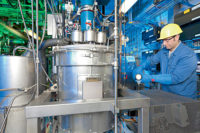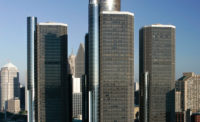Doing business in the Asia-Pacific region today is not the same as it was 50 years ago. Around the region, countries are pushing for greater connectivity through initiatives like China’s Belt and Road Initiative (B&R) and the Association of Southeast Asian Nations(ASEAN) efforts to integrate and harmonize regulatory regimes. Regional markets share a common interest in driving an Asian renaissance in industry and economic development. Compared to Europe or America—regions that are more homogenous and often linked by a common language—an integrated regional network across the Asia-Pacific region might sound like a lofty ambition. Increasingly, however, it is coming to be seen as an essential prerequisite for achieving business success in Asia.
When Western companies first started entering the region in the 1950s, their objectives were straightforward: go to the place where the product was most needed or the resource could most conveniently be accessed. Local businesses in the region at the time had an even clearer need: local resources. That worked well for some time because, even then, the Asia-Pacific region was diverse, with huge variations in terms of natural resources, transportation and other infrastructure, history, culture, workforces, and levels of development. Companies that wanted to find resources or buyers for their products were bound to find them somewhere.
That is changing rapidly. Today, linear business models can’t drive long-term development as easily. Different markets are faced with different challenges, whether it’s the saturation of domestic markets in certain product categories, rising labor costs, dwindling natural resources or middle income traps. From a cross-border perspective, the region is one of the most important in the world due to its large population and the potential advantages of scale that it offers. Most long-term projections confirm that the region will account for the lion’s share of the global economy in the medium-term, potentially exceeding 50% of global GDP by 2050.1
Regional Advocacy
It is notable that, in less than two years, more than 50 countries have joined the discussion, including Singapore, Indonesia, Thailand and other ASEAN countries. This was after Chinese leadership brought up the vision of “B&R” in 2013, the new Silk Road initiative, which was aimed at rejuvenating the ancient regional trade routes and at further opening up markets within and beyond the region. Meanwhile, ASEAN, a political and economic organization of 10 Southeast Asian countries, of 4.4 million sq km of land and of 625 million people, is aggressively pursuing integration as well, especially with the milestones of the establishment of ASEAN Free Trade Area in 2002 and the ratification of ASEAN Charter in 2008. All these great regional advocacies are stating one truth for the gold-diggers: doing business here is not one market plus another anymore. When the region’s economies are trying so hard to be connected and integrated, so should the business of companies here.
While the regional connectivity is intensifying market challenges in Asia-Pacific, it is also bringing greater opportunities. Those who can seize the opportunity and build up an integrated regional network of resources, customers, production, R&D, and talents, are assured greater success in this enormous market.
Connecting Cross-Market Presence
Henkel was established 139 years ago; our Adhesive Technologies business entered Asia more than 60 years ago. As an innovation-driven company, we always think one step ahead and strategically turn trends we see into business opportunities. We view this region as one of our most important markets globally and pay close attention to it. We are both deeply rooted and broadly represented in more than 12 countries and market regions in the Asia-Pacific, while maintaining a strong relationship with our global strategy and innovation team. This allows us to tap into local opportunities quickly, while strengthening integrated regional and global capabilities. The superiority gained from this connectivity can be seen in every single aspect of our business.
For instance, I frequently travel in order to support the company’s regional and global networks. Serving two roles at Henkel, one as corporate senior vice president of Transport and Metal, which covers the automotive, aerospace, and metal industries, and the other as regional head of Henkel’s Adhesive Technologies business in Asia-Pacific, I realize that my two roles inform and benefit one another. In my global role, I am actively steering our Transport and Metal business across all regions. Thus, when it comes to the Asia-Pacific market, my connected experience helps me to identify and understand developing trends promptly so that we can bring in leading technology solutions and innovative answers from different regions for the Asia-Pacific market’s needs. This is the reason why multinational corporations (MNCs) work with global partners that can customize global solutions for local use, while guaranteeing consistent service and quality.
Conversely, the Asia-Pacific local-driven innovation and customer experience also contribute to the global picture. This is illustrated by the increasing number of design centers in the Asia-Pacific region. From innovation through cross-industry technologies to partnerships with local customers in the early stages of design, I work with regional teams to maximize synergies across our business in various industries such as railway, automotive and aerospace. This is how we implement the regional connectivity and deliver maximum value to our customers.
Connecting Cross-Industry Expertise and Regional Megatrends
Henkel Adhesive Technologies is a leading solution provider for adhesives, sealants and functional coatings, providing a strong enabling factor in our customers’ businesses. When you are in a car on the highway, do you ever feel a sense of trembling and vibrating? It can still be noticeable when you are in a lower-end car today. One of the advanced technologies that we are working with our customers today is addressing the increasing demand for high-performance noise, vibration and harshness solutions. Our portfolio allows car manufacturers to make their vehicle quieter, and improve the overall safety of the car by reinforcing the car body structure. Similar technologies have also been used in the home appliance industry, where quieter and more durable washing machines, refrigerators, and air conditioners are desired.
Processing in-depth local market know-how and cross-industry expertise, Henkel Adhesive Technologies is well-positioned to help global MNCs expand further into different environments, and assist local brands encouraged by the “going global” call and “belt and road initiative” to grow their own global brands. Constant monitoring of regional megatrends allows us to gain experience and expertise in building up integrated networks, which we can then use in strategic partnerships with our local customers to help them achieve greater success.
Among Asia-Pacific countries, the need to exchange information about the latest products, technologies, concepts and innovations calls for better transportation and communication infrastructure. This resonates with the regional megatrends of mobility and communication. These trends have led to a faster and more constant increase in adhesive consumption in China and Asia-Pacific markets than in other mature markets. We see significant market opportunity within the transportation network of high-speed trains, which will require a considerable amount of superior adhesive technologies and solutions. This same desire for connectivity among humankind also spurs the development of smartphones, tablets and all kinds of hand-held devices and displays, where Henkel Adhesive Technologies plays a critical role in bonding, chip-protecting and the enabling of new functions.
A region’s economic development is always accompanied by its demographic change. With population growth and urbanization continuing to gather pace across the region, the rise of the region’s middle class is leading to an unprecedented demand for household applications and various high-quality consumer goods. Henkel Adhesive Technologies is working with pioneering local manufacturers to provide solutions for LED and OLED. We can help create smart surroundings as well as next-generation living space solutions, enabling the integration of connected cars, home appliances, residential buildings and medical devices. Our solutions avail themselves of such megatrends to infiltrate an array of industrial sectors and improve people’s daily lives, playing their part in bringing greater success for customers and creating a brighter future for all.
For more information, visit www.henkel-adhesives.com.
Reference
Asia Development Bank Report, http://adb.org/sites/default/files/asia2050-executive-summary.pdf.




